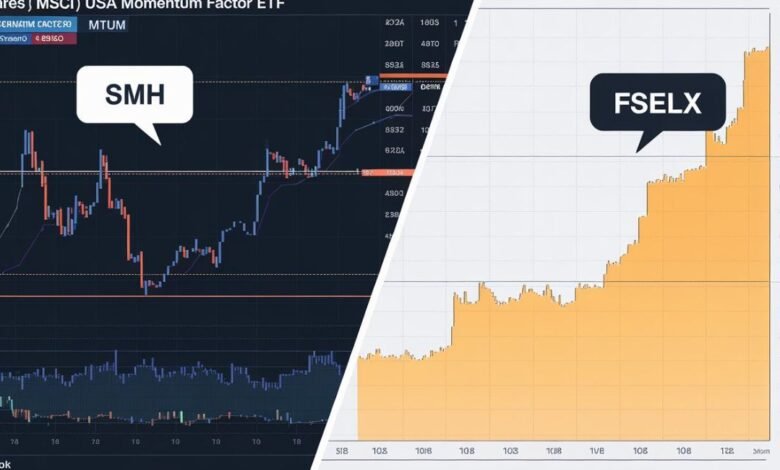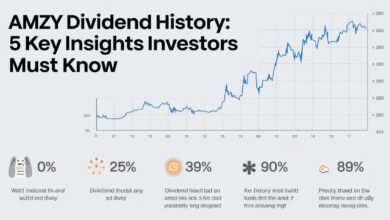SMH vs FSELX: Uncovering Dividend Impact & Hidden Fund Fees!

Introduction:
When it comes to comparing the SMH vs FSELX ETFs, investors are often torn between dividend returns and fund fees. Both funds target different sectors but have nuances that significantly impact their net returns. This article delves into the dividends, fees, and their net impact to help you make smarter financial decisions.
Want to maximize your returns? Find out which fund offers the better deal after factoring in fees and dividends.
Understanding the true cost of investing goes beyond performance. In this detailed analysis, we weigh dividends against fees to give you a comprehensive view of SMH vs FSELX.
SMH vs FSELX: Which Fund Offers Higher Dividends?
When comparing SMH (the VanEck Semiconductor ETF) and FSELX (Fidelity Select Technology Portfolio), one critical factor is dividend yield. It’s essential to evaluate how these funds perform in terms of dividend payouts. SMH, targeting the semiconductor sector, often provides lower dividends due to the nature of its holdings. On the other hand, FSELX, focusing on a broader technology spectrum, may have higher yields but this can fluctuate. Therefore, dividends are not the only consideration, but an essential one in evaluating your long-term return.
FSELX typically provides higher dividends: comparatively to SMH, as it provides broader understanding of the technology sector and includes companies giving more regular dividends.
SMH, focused on semiconductor stocks tends to offer lower dividends: because the majority of the firms in the semiconductor industry are capital intensive, which mostly focus on expansion of their business rather than distributing profits.
Dividend yields for both funds fluctuate: adjustable according to current conditions in the market and results of the work of the assets that are in the holding.
FSELX’s diversified tech exposure: is more likely to result in greater and more consistent dividends than the frequently fluctuating semiconductor sector in SMH.
For income-seeking investors: FSELX may be more attractive owing to the fact that it has generally higher and more frequent dividend yields.
The Role of Fund Fees in Long-Term Returns
Fund fees play a significant role in shaping the net returns of any investment. SMH charges a lower expense ratio at 0.35%, while FSELX tends to be on the pricier side with a fee of around 0.72%. However, these percentages may seem small, and they can actually translate into a huge proportion of the total investment growth over a period. As a result, it is important that one can understand the effect of the fees in relation to the portfolio over the long term in a bid to make the right decision between the two ETFs in question.
Sector-Specific Exposure and Risk
SMH gives you focused exposure to semiconductor stocks, which can be volatile but potentially high-rewarding during tech upswings. In contrast, FSELX offers a broader reach across the tech landscape, diversifying risk but also potentially diluting gains during sector-wide booms. Evaluating which sector aligns with your risk appetite is essential for selecting the right ETF. Both funds have inherent sector risks that should be balanced against potential returns.
Net Impact: Balancing Dividends with Fees
After analyzing both dividends and fees, the net impact of investing in SMH vs FSELX becomes clear. While SMH offers lower fees, its dividend payouts may be less appealing compared to FSELX, which could deliver more income over time. However, FSELX’s higher fees might eat into those gains. The net impact depends largely on the investment horizon and the compounding effects of these factors over time. Choose carefully based on what fits your financial goals.
Which Fund Is Right for Your Portfolio?
When deciding between SMH and FSELX, the right choice depends on your investment goals. If one wants to go for high growth potential but with lower fees then SMH will be a good choice. But if you are an investor who prefers more predictable dividend payments and is willing to get charged slightly higher fees then FSELX could be a preferable choice. Regardless, one has to understand how such funds complement or detract from the overall strategy of the portfolio. This is crucial when measuring overall returns.
SMH for Growth-Oriented Investors: Thus, for the investors who are ready to bear sector-specific risks and high volatility but in exchange, which can provide much higher returns and lower fees as compared to diversified Russell index, SMH is the perfect fit for long-term profits.
FSELX for Dividend Seekers: For investors who place heavy emphasis on dividend income albeit have no problem with paying slightly higher fees to get coverage for the larger technology sector, FSELX is a worthy consideration.
Balancing Risk and Reward: Some investors can bear higher risks to achieve certain targeted returns, for such investors SMH is recommended while others who wish to invest in a diversified portfolio which is slightly more conservative should consider FSELX.
FAQs:
What is the primary difference between SMH and FSELX?
SMH focuses on semiconductor stocks, while FSELX covers a broader technology sector.
Do SMH or FSELX offer higher dividends?
FSELX generally offers higher dividends, but this can vary over time.
Are the fees for SMH lower than FSELX?
Yes, SMH has lower expense ratios compared to FSELX.
Which fund is riskier: SMH or FSELX?
SMH, being focused on semiconductors, tends to be riskier than the more diversified FSELX.
Can fees significantly impact my long-term returns?
Absolutely. Fees can compound over time and reduce your net investment returns.
Conclusion:
Deciding between SMH and FSELX ultimately comes down to your individual financial goals and risk tolerance. SMH offers lower fees with sector-specific exposure, ideal for growth-focused investors. Meanwhile, FSELX might appeal to those seeking more stable dividends despite higher fees. Dividing the dividends by the fees and evaluating the possible risks connected to the sector, investors can find the way to determine the fund which can meet their aims in the long run. Be careful in your choice to get the most of NET returns…



